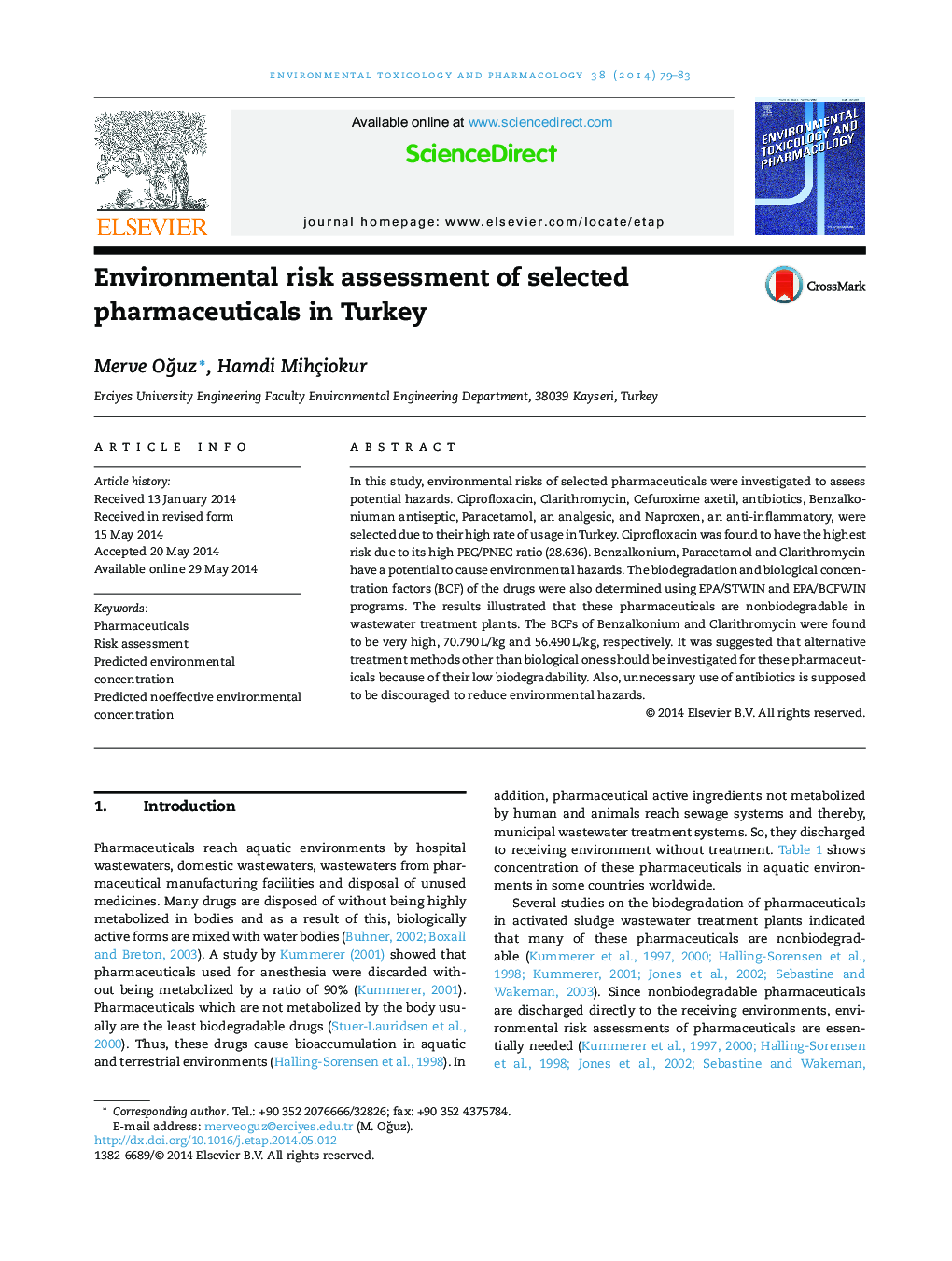| Article ID | Journal | Published Year | Pages | File Type |
|---|---|---|---|---|
| 2583729 | Environmental Toxicology and Pharmacology | 2014 | 5 Pages |
•Selected pharmaceuticals in this study are nonbiodegradable in biological wastewater treatment plants.•Ciprofloxacin was found to have the highest risk due to its high PEC/PNEC ratio (28.636).•Benzalkonium, Paracetamol and Clarithromycin have a potential to cause environmental hazards.•BCFs of Benzalkonium and Clarithromycin were found to be very high, 70.790 L/kg and 56.490 L/kg, respectively, showing their adsorption capacity on the living is very high.
In this study, environmental risks of selected pharmaceuticals were investigated to assess potential hazards. Ciprofloxacin, Clarithromycin, Cefuroxime axetil, antibiotics, Benzalkoniuman antiseptic, Paracetamol, an analgesic, and Naproxen, an anti-inflammatory, were selected due to their high rate of usage in Turkey. Ciprofloxacin was found to have the highest risk due to its high PEC/PNEC ratio (28.636). Benzalkonium, Paracetamol and Clarithromycin have a potential to cause environmental hazards. The biodegradation and biological concentration factors (BCF) of the drugs were also determined using EPA/STWIN and EPA/BCFWIN programs. The results illustrated that these pharmaceuticals are nonbiodegradable in wastewater treatment plants. The BCFs of Benzalkonium and Clarithromycin were found to be very high, 70.790 L/kg and 56.490 L/kg, respectively. It was suggested that alternative treatment methods other than biological ones should be investigated for these pharmaceuticals because of their low biodegradability. Also, unnecessary use of antibiotics is supposed to be discouraged to reduce environmental hazards.
